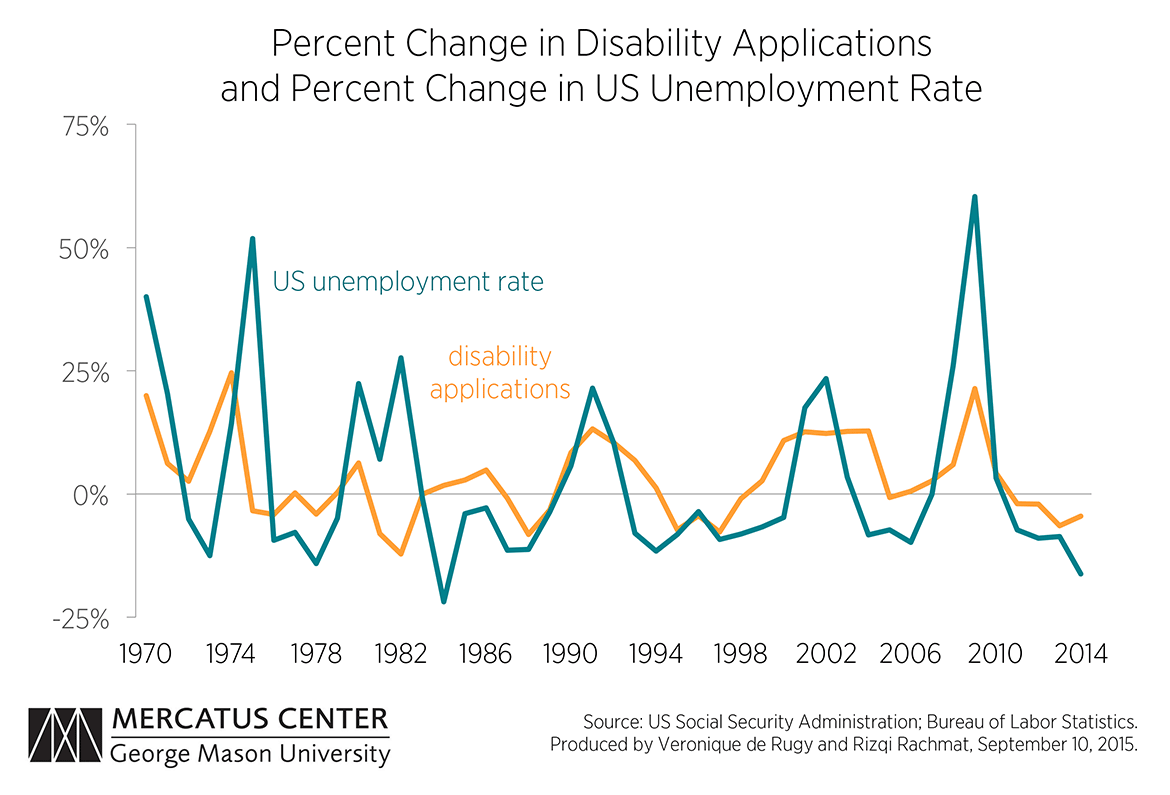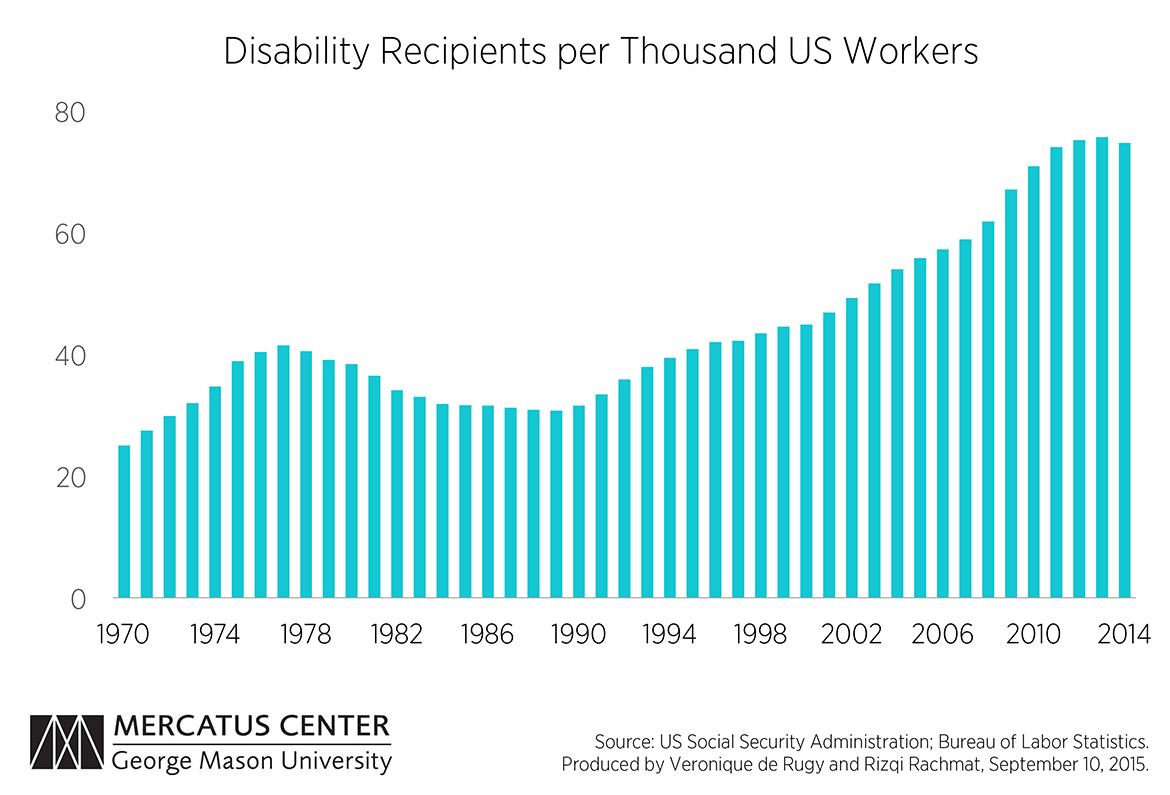- | Government Spending Government Spending
- | Data Visualizations Data Visualizations
- |
Social Security Disability Insurance Isn’t Doing What It’s Supposed to Do
As I underscored in two recent charts, the Social Security Disability Insurance (SSDI) program is financially unsustainable, and to save it, policymakers need to rein in benefits, which have exploded in recent years. This week’s charts add two important points: first, that SSDI has turned into a quasi-unemployment program, and second, that the good intentions that prompt the creation of federal programs are not enough to prevent poor and costly outcomes.
As I underscored in two recent charts, the Social Security Disability Insurance (SSDI) program is financially unsustainable, and to save it, policymakers need to rein in benefits, which have exploded in recent years. This week’s charts add two important points: first, that SSDI has turned into a quasi-unemployment program, and second, that the good intentions that prompt the creation of federal programs are not enough to prevent poor and costly outcomes.
The first chart juxtaposes the annual percentage change in applications for SSDI benefits against the annual percentage change in the unemployment rate from 1970 to 2014.

The trend is discernable: when unemployment rises, applications for disability benefits tend to rise, and vice-versa. It suggests that, to some degree, people view SSDI as a choice rather than as a last resort. People obviously do not become more or less disabled when the economy is stronger or weaker. Thus, SSDI seems to be serving as a quasi-unemployment program, which was not the intent of the program.
The second chart also shows that SSDI has become something other than a last resort for those who are truly unable to work owing to a disability.
The chart shows the number of disabled workers collecting SSDI benefits per 1,000 workers (ages 25 to 64) from 1970 to 2014. Over the past two decades the figure has practically doubled. This jump is unexpected in view of the shift away from manual blue collar jobs toward less labor-intensive white collar jobs. Advances in medical technologies have enabled people to live more productive lives compared to the past. One would expect that the ratio of disabled workers to workers would have dropped, or at least stayed flat, rather than the explosion of claims reflected in the data.
SSDI is similar to other federal programs in that it was created with good intentions to protect the truly disabled, but it has metastasized into something undesirable and costly. Policymakers need to tackle the inherent flaws of SSDI that have caused it to become less of a protection for the truly disabled and more of an optional unemployment or welfare program. Indeed, the current arrangement is unfair to workers who pay the taxes to prop up an increasingly expensive program that has drifted far from its original purpose.


